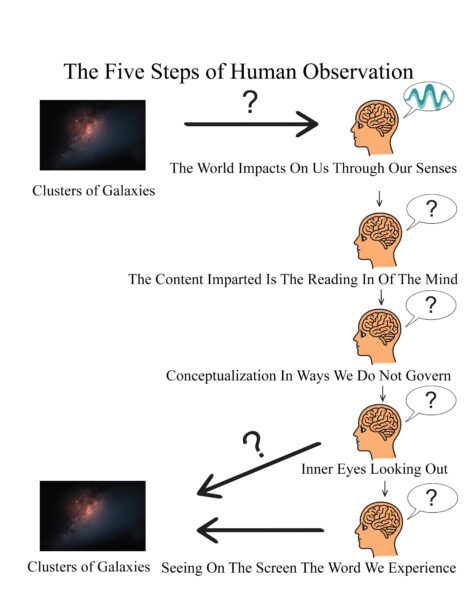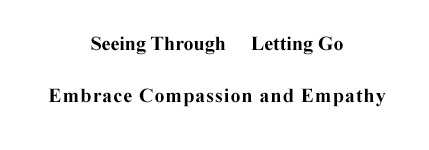As this Wikipedia article states, “Epistemology is the branch of philosophy that examines the nature, origin, and limits of knowledge. Also called the theory of knowledge, it examines what knowledge is and what types of knowledge there are. It further investigates the sources of knowledge, like perception, inference, and testimony, to determine how knowledge is created. Another topic is the extent and limits of knowledge, confronting questions about what people can and cannot know. Other central concepts include belief, truth, justification, evidence, and reason. Epistemology is one of the main branches of philosophy besides fields like ethics, logic, and metaphysics.”
As stated in an earlier post, “What Exists?”, “In his doctrine known as ‘Nothing but Mentality (Chinese = 心外無法),’ Buddha teaches that mentality is the only perduring reality in the cosmos. Furthermore, mentality exists in two distinct states: quiescent and fluctuating. These two states of quiescent and fluctuating mentality explain the entirety of existence in the cosmos.”
Therefore, in the Buddha’s three-body cosmos, in addition to the Buddha himself, there are two realms of mentality with different fluctuation states. The quiescent mentality belongs to the imperceivable Ultimate Reality, while the realm of the fluctuating mentality manifests as the visible, phenomenal world that humans can experience. Consequently, the Buddha teaches that humans require two means of knowledge to understand these two domains with different visibilities: inference to understand the visible phenomenal world, where mentality fluctuates, and direct perception to understand the invisible realm, where mentality is quiescent.
However, the current scope of epistemology encompasses inference as the sole means of knowledge available to humans without direct perception. However, according to Buddha, direct perception is available to all humans to utilize. Therefore, our exploration of epistemology aims to expand the current scope of epistemology to include direct perception, thus enabling humanity to understand both the visible and invisible phenomena.
In this post, we discuss inference, one of Buddha’s two means of knowledge. The means of knowledge is known in Romanized Sanskrit as Pramana (Chinese = 量).
Inference (Romanized Sanskrit=anumana; Chinese=比量), according to The Princeton Dictionary of Buddhism, “allows us to glean knowledge concerning objects that are not directly evident to the senses.”
Anumana is closely associated with another concept known in Romanized Sanskrit as agamadharma (Chinese=教法), which, according to The Princeton Dictionary of Buddhism, is “in Sanskrit, ‘scriptural dharma.’ In contrast to adhigamadharma, it refers to the mere conceptual understanding of Buddha’s teachings through studying Buddhist sutras.”
The discussion of inference begins with a fascinating dialogue between Dr. Menachem Fisch, an internationally renowned historian and philosopher of science, and Dr. Robert L. Kuhn, the host of Closer to Truth. Their contemporary language can greatly aid our understanding of Buddha’s teachings from thousands of years ago.
“How do we know what we know?” is the question Dr. Robert L. Kuhn asked his guest to start the conversation.
Dr. Fisch started by stating that, according to latter-day philosophy, “we do not know by our eyes or by our ears, but by means of the words we speak.”
Instead, Dr. Fisch suggested that “we are stimulated by the world,” and while “the world impacts on us in a causal manner through all our senses, but the content imparted on those stimuli is the reading in of the mind. It’s imparted by the mind.”
Dr. Fisch continued, “How we know is by means of their conceptualization.” “Sitting in the command room of our minds with the inner-eyes and looking out, … we don’t look out the windows of our eyes; everything happens within the head,… so sitting back on that armchair in the command console, and seeing on the screen the world that we experience, all that data has already been fashioned and conceptualized by our minds in ways that we do not govern.” “This is sensing.”
“Knowing,” Dr. Fisch continued, “is to render explicit those conceptualizations. In other words, to take stock explicitly, um, that’s a horse, ah, I am talking to an interviewer, and so on and so forth.” “What we can know, not what we can feel, is the function of the language of conceptual schemes, the concepts by which we conceptualize.”
Additionally, Dr. Fisch suggested, “if you look into the dictionary, words are explained by other words. The conceptual scheme, the vocabulary at our disposal, by which we experience and by which we know, is inferentially connected.” “In other words, if this point is north of that, then that point is south of that. That is about the meaning of the words. This isn’t an empirical fact. This is about how these concepts relate to each other. The limits of what we can know, the limits of our world, is the limits of our language!”
“The intriguing thing about bringing language into epistemology is that you can only know something new by using old words. If you invent a new term, it’s just a tag, not a concept.” “Like every person in this studio, you are unique. But the only way I can account for your uniqueness is by means of a set of concepts by which you are likened to others.”
“We know by means of using a concept.” Using a concept is to liken what we see to something else. So, concepts are little metaphors, a little class names.”
Dr. Kuhn immediately recognized the immensity of Dr. Fisch’s words as he questioned, “What prevents you from cascading into skepticism where we can’t know anything? Everything is related to something else. I have no foundation between what I believe and what the world really is. So, how do I know anything?”
In response, Dr. Fisch rhetorically asked Dr. Kuhn, “Define know.” However, he answered his own question as he continued, “What you are saying now is that we should be skeptical about knowing for sure, about how things stand in themselves, not how things are experienced by us.”
“How things are experienced by us,” Dr. Fisch expounded, “is already language informed, or concept informed.” “We know pretty much about the self we experience, the world we experience, the world we find ourselves living in.” “We got it right. We got it right according to our standards, no other standards.”
“Do we know things stand in themselves?”
“God knows,” was the reply.
In Dr. Fisch’s opinion, with only inferentially connected vocabulary at our disposal, humans are seemingly cursed only to know “how things are experienced by us,” not “how things stand in themselves.“
Of course, Buddha disagrees. In Buddha’s cosmos, where there is Nothing but Mentality, mentality is “how things stand in themselves,” as Dr. Fisch describes it, or “how the world really is,” as Dr. Kuhn describes it. Indeed, direct perception, Buddha’s second means of knowledge, is for understanding mentality.
In addition to explaining inference, Dr. Fisch also discusses the following five steps of sensing, as illustrated in the image below.
- “the world impacts on us in a causal manner through all our senses,”
- “the content imparted on those stimuli is the reading-in of the mind,”
- “the content gets fashioned and conceptualized by our minds in ways that we do not govern,”
- “Sitting in the command room of our minds with the inner eyes and looking out,”
- “seeing on the screen the world that we experience.”

As can be seen from the image, while Dr. Fisch describes each step, he does not provide any details on them. For example, how do the galaxies impact the eyes when they are so far away? They certainly do not crash onto the eyes. What happens in the brain when the content becomes “reading in of the mind?” What is conceptualization? What are the inner eyes looking out, and does “the world we experience” become visible?
Indeed, these are details that even a highly educated, prominent philosopher who relies on inference for knowledge cannot be expected to understand. Buddha explains why in his doctrine known as the Five Aggregates.
The Five Aggregates are Buddha’s equivalent of the five sensory steps Dr. Fisch describes. To understand the details of the five sensory steps, one must first understand mentality because all five steps are mental. We will discuss them in a future post.
Although we are uncertain about the nature of “conceptualization in ways we do not govern,” we can be sure that it not only changes the original content that “the world impacts on us in a causal manner through all our senses,” but it also occurs without anyone knowing or controlling. Then, somehow, through the “inner eyes looking out,” the distorted contents become “the world we experience” that can be “seen” on the screen. This is strange because the original contents that impact the senses, in this case, the eyes, are invisible. In other words, conceptualization changes the invisible to become the visible.
Seemingly, observation changes reality. Or does it? We will explore what Buddha teaches when we discuss the Five Aggregates and related topics in future posts.
In the next post, we will discuss the Kalama Sutta, in which the Buddha offers his opinion on why inference is not a suitable tool when searching for an unchanging Truth. We will discuss direct perception after that.
(If you like this post, please like it on our Facebook page and share. Thank you.)


